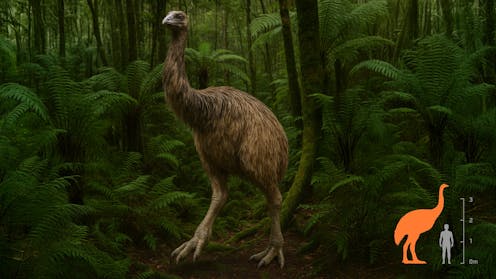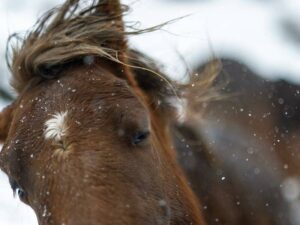
The announcement from Colossal Biosciences regarding the de-extinction of New Zealand’s moa nunui (giant moa) has sparked significant concern among the scientific community. This initiative, developed in collaboration with the Canterbury Museum, the Ngāi Tahu Research Centre, and filmmaker Peter Jackson, follows the company’s previous success in recreating the dire wolf, a genetically engineered version of a grey wolf. Experts caution that reviving the moa presents far greater challenges than the earlier project.
Birds, particularly those like the moa, pose unique difficulties for de-extinction efforts. Unlike placental mammals, the process requires a surrogate egg for the developing chick, and no existing bird species has an egg large enough to accommodate a moa chick. Consequently, researchers may need to create artificial eggs, complicating the endeavor.
Moreover, the evolutionary lineage of the moa adds another layer of complexity. The moa is most closely related to the tinamou, a small flying bird from South America. To trace the common ancestor of the moa and the tinamou, scientists must go back approximately 60 million years. This timeframe has seen an array of genetic mutations that would need to be reversed to recreate the physical traits of the moa.
Challenges of Genetic Engineering
The evolutionary history of the palaeognath group, which includes the tinamou and various flightless birds—such as emus and ostriches—compounds the challenges of creating a moa hybrid. Genetic engineering efforts would likely produce a creature that resembles a moa but lacks its unique characteristics, described by critics as lacking the mauri, or life force, of a true moa.
Additionally, no living species within the palaeognath group can serve as effective analogues for the moa. This raises questions about how any de-extinct birds would fit into current ecosystems. Moas had a distinct evolutionary path, most notably lacking wings, unlike other flightless birds that retain wing remnants. Engineering a bird with these specific characteristics would necessitate targeting particular genomic regions, potentially yielding unforeseen consequences.
Researcher Nic Rawlence is actively involved in a project aimed at sequencing high-quality genomes of various moa species to understand their evolutionary history better. Rawlence highlights that conversations with the tangata whenua (indigenous people of New Zealand) reveal a lack of support for de-extinction initiatives. The iwi (tribes) involved express concerns about the use of moa bone samples and DNA being taken abroad.
Ethical and Ecological Considerations
The Ngāi Tahu iwi, a significant group in the region, has voiced opposition to de-extinction efforts. Rawlence urges Colossal Biosciences, along with its partners, to disclose the extent of their consultations across the Ngāi Tahu network. The various iwi in the South Island have also indicated their disapproval of bringing back the giant moa, emphasizing the need for broad consensus before any such project proceeds.
Concerns extend beyond ethical considerations. Māori communities have long expressed their desire to be included in discussions regarding genetic engineering and the potential repercussions of exporting genetic material. However, the involvement of the Ngāi Tahu Research Centre in this project is a positive step, indicating a commitment to engage local communities and restore habitats suitable for moa.
Restoration of these habitats is itself a formidable challenge, given the significant ecological changes that have occurred since the moa’s extinction. Once, parts of the eastern South Island were rich in open forest shrubland dominated by indigenous plants such as kowhai and lancewood. Today, little of this habitat remains.
If efforts to de-extinct the moa were successful, it would be necessary to produce a viable population—at least 500 individuals—to prevent inbreeding and genetic drift. Such a venture would require substantial funding for ongoing conservation, raising concerns about potential financial diversion from existing conservation programs aimed at protecting currently endangered species.
While the genetic engineering technology being developed by Colossal Biosciences holds promise for the conservation of New Zealand’s endangered species, prioritizing projects that have community support may yield more immediate benefits. For instance, genetically engineering a kākāpō to resist disease could be a worthwhile endeavor, benefiting both the species and its conservation efforts.
In conclusion, while the idea of resurrecting the giant moa captures the imagination, the scientific, ethical, and ecological hurdles suggest that such a venture is fraught with challenges. Engaging with local communities and focusing on the conservation of existing species may prove to be more impactful for New Zealand’s biodiversity.






